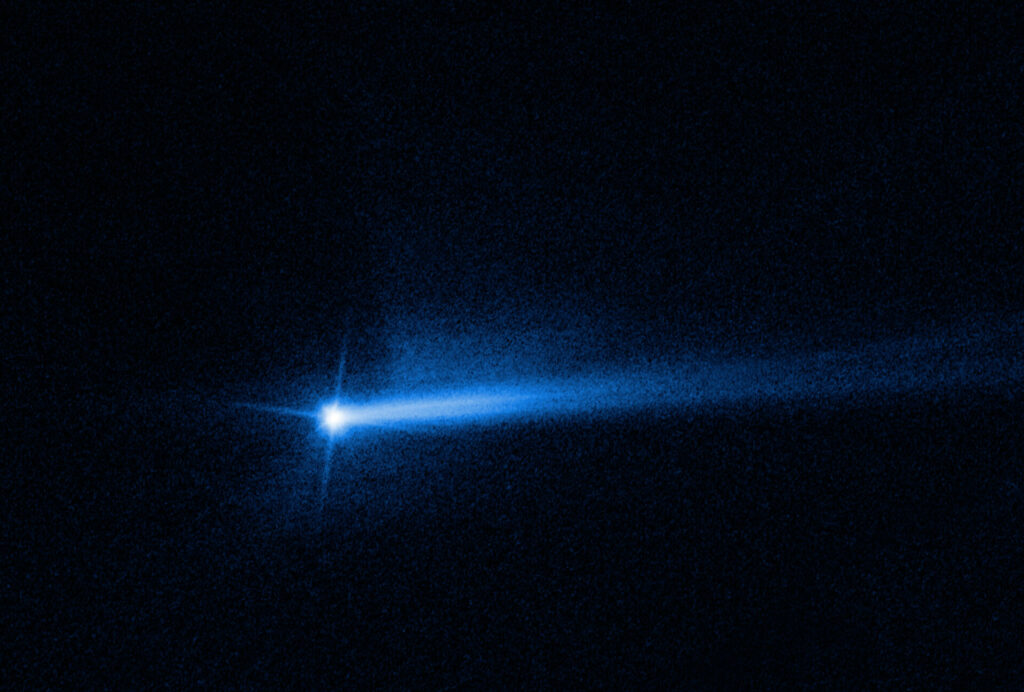The collision of the DART probe with the Dimorphos asteroid led to the formation of a double tail. This is evidenced by new images taken by the Hubble telescope.

The main task of the DART mission was to test the possibility of changing the orbit of a celestial body threatening the Earth by kinetic action. Its target was the 170-meter asteroid Dimorphos, which is a moon of the larger asteroid Didymos.
DART crashed into Dimorphos on September 27. The collision and its consequences were monitored by both the LICIACube cubesat, which had separated from the probe in advance, and a number of ground-based and space observatories. They recorded a large release of matter, thanks to which the asteroid acquired a comet-like tail, with a length of 10 thousand km.
During subsequent measurements, astronomers also managed to determine that after the impact, the period of the Dimorphos’s orbit Didymos decreased by 32 minutes. This is much more than the existing models predicted.
However, the consequences of the impact were not limited to this. In the weeks following the collision, the Hubble Telescope made a total of 18 Dimorphos observations. They showed that in the period from October 2 to October 8, the small body acquired a second tail. This is often observed in comets and active asteroids, but astronomers did not expect such a structure to appear in the Dimorphos. They plan to continue observations to understand the mechanism of formation of its second tail.
Follow us on Twitter to get the most interesting space news in time
https://twitter.com/ust_magazine

